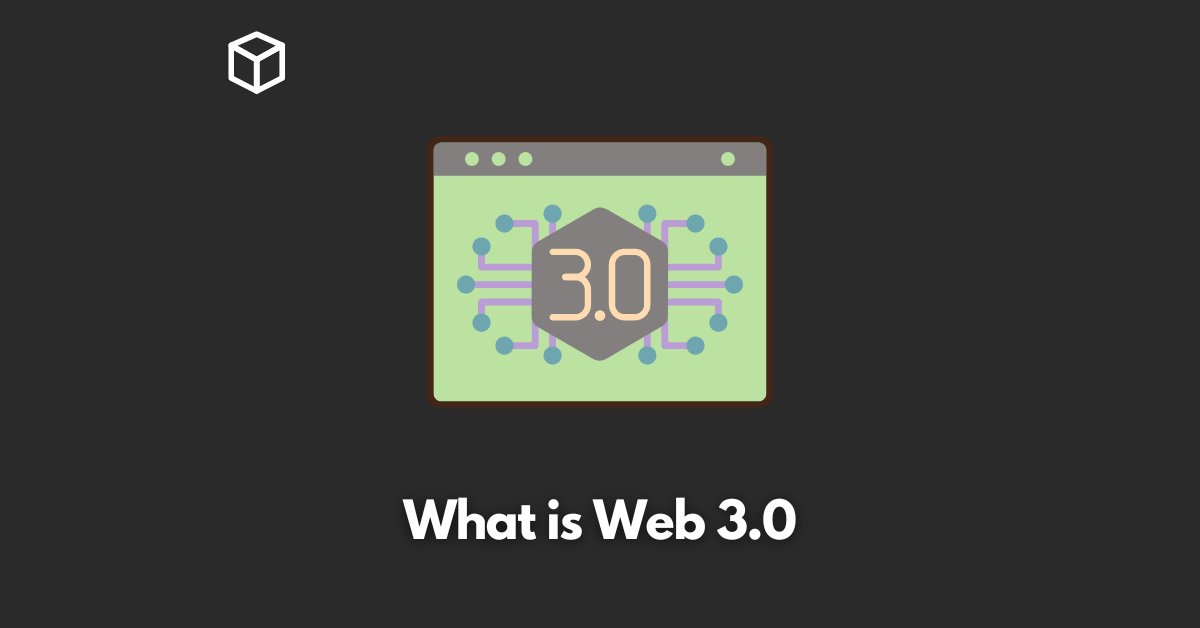Web 3.0 is the next evolution of the internet, characterized by the use of decentralized technologies such as blockchain, smart contracts, and distributed ledgers to create a more open, autonomous, and secure web.
Web 3.0 is the third generation of the internet, building upon the foundation of Web 1.0 and Web 2.0. The first version of the web, Web 1.0, was primarily a read-only platform, where users could access information but not interact with it.
Web 2.0, on the other hand, enabled users to interact and share information through social media and other collaborative platforms.
Web 3.0 is different from the previous versions of the web in that it is based on decentralization.
This means that the power and control of the internet is distributed among users, rather than being centralized in the hands of a few large companies or organizations.
In this article, we will explore the key features and potential impact of Web 3.0 on various industries.
Decentralization
Decentralization is the process of distributing power and control among multiple parties, rather than having it centralized in one place.
In the case of Web 3.0, this means that users have more control over their data and online interactions.
Decentralization is made possible through the use of blockchain technology, which allows for the creation of decentralized networks that are not controlled by any one entity.
This is the fundamental technology that allows Web 3.0 to be more open, autonomous, and secure.
Advantages of decentralization for users and businesses include increased security, transparency, and control over data.
Additionally, decentralized networks are less vulnerable to hacking and other forms of cybercrime.
Blockchain and Smart Contracts
Blockchain technology is the backbone of Web 3.0. It is a decentralized, digital ledger that records transactions across a network of computers.
Each block in the chain contains a record of multiple transactions, and once a block is added to the chain, it cannot be altered.
This makes blockchain networks highly secure and resistant to fraud.
Smart contracts are self-executing contracts with the terms of the agreement written directly into code.
They are stored and replicated on the blockchain network, making them tamper-proof and transparent.
Smart contracts can be used to automate processes, such as the transfer of assets or the release of funds.
Examples of how blockchain and smart contracts are being used in various industries include supply chain management, finance, and healthcare.
In the supply chain industry, blockchain technology is being used to track the movement of goods and ensure transparency in the supply chain.
In the finance industry, blockchain technology is being used to create decentralized, peer-to-peer financial systems.
In the healthcare industry, smart contracts are being used to securely and automatically manage and share patient data.
Distributed Ledgers
Distributed ledgers are digital databases that are spread across a network of computers, rather than being stored in a centralized location.
They are similar to blockchain technology in that they are decentralized and secure, but they do not necessarily use blockchain technology.
Distributed ledgers can be used to create a more secure and transparent web by allowing multiple parties to access and verify data.
They can also be used to create decentralized systems, such as peer-to-peer marketplaces or voting systems.
Examples of how distributed ledgers are being used in various industries include real estate, voting systems, and identity verification.
In the real estate industry, distributed ledgers are being used to create a more transparent and efficient system for buying and selling property.
In voting systems, distributed ledgers can be used to ensure that votes are counted accurately and securely.
In identity verification, distributed ledgers can be used to create a decentralized, secure system for storing and sharing personal information.
Impact of Web 3.0
Web 3.0 will change the way we interact with the internet by giving users more control over their data and online interactions.
It will also have a significant impact on various industries, such as finance, healthcare, and supply chain management.
In the finance industry, Web 3.0 will enable the creation of decentralized, peer-to-peer financial systems that are not controlled by any one entity.
This will increase security and transparency, and could potentially disrupt traditional financial institutions.
In the healthcare industry, smart contracts and blockchain technology will enable the secure and efficient sharing of patient data, improving the quality of care.
In the supply chain industry, blockchain technology will enable greater transparency and traceability, allowing businesses to track the movement of goods and ensure the authenticity of products.
Conclusion
Web 3.0 is the next evolution of the internet, characterized by the use of decentralized technologies such as blockchain, smart contracts, and distributed ledgers to create a more open, autonomous, and secure web.
It will have a significant impact on various industries and it could change the way we interact with the internet, giving us more control over our data and online interactions.
As the technology continues to evolve, the potential of Web 3.0 is limitless.
It’s exciting to see the development and implementation of Web 3.0 and how it will shape the future of the internet.




